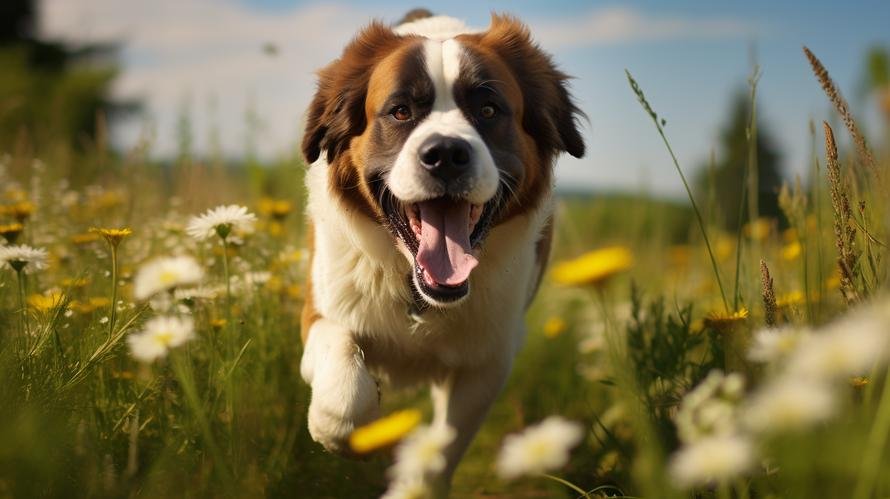Bet you didn’t know that St. Bernards, those big, droopy-faced dogs known for their incredible sense of direction and rescue skills, are known to be one of the most gentle breeds out there. Picture this: a towering, furry beast coming to your rescue in the treacherous, snowy passes of the Swiss Alps, carrying a lifesaving barrel of brandy around its neck. That’s the image most people have of the St. Bernard. But is there more to this breed than we know? Some people ask, “Are St. Bernards dangerous?”
This may come as a surprise, but despite their huge size, St. Bernards are often affectionate, friendly, and great with kids. But, like any breed, how they are raised, trained, and treated can greatly influence their behavior.
Now, don’t go rushing to a St. Bernard breeder just yet. Get to know more about these gentle giants and why size isn’t always an indicator of a dangerous dog.
Let’s start with a quick history lesson about our furry friends. St. Bernard’s are huge, intelligent, and powerful dogs, once bred for their ability to locate lost travelers in the looming Swiss Alps. They are named after the St. Bernard Pass, where monks who ran a traveler’s lodge would use them for their impressive rescue abilities. Interesting, isn’t it?
St. Bernards are huge dogs, with males typically weighing between 140 and 180 pounds and standing about 27.5 to 35.5 inches tall. Females, on the other hand, usually weigh between 120 and 140 pounds and can be 26 to 31 inches tall. But it’s not their size that makes them fearsome – in fact, despite being one of the world’s largest dog breeds, they are often described as gentle, friendly, and kind-hearted.
Like all dogs, the St. Bernard isn’t naturally dangerous or aggressive. Remember: no breed is inherently bad or dangerous. A lot of a dog’s behavior is influenced by how it’s raised, treated, and socialized. If you bring up a St. Bernard in a loving, social, and well-trained environment, there’s every chance you’ll have a friendly giant on your hands rather than a monstrous beast.
However, it’s important to remember that due to their size, they could accidentally hurt humans, especially small children, if not properly trained or if they become too excited. Owning a St. Bernard, or any large dog breed for that matter, requires responsibility and understanding of their size and strength.
So, you may wonder, how can we ensure a St. Bernard doesn’t become a threat? The answer lies in early socialization and consistent training. From a young age, St. Bernards should be introduced to other pets, people, and environments. This will ensure they grow up to be well-adjusted, confident dogs.
Training a St. Bernard can be a bit of a challenge as they are a giant breed. They need a dedicated owner who can positively enforce learning and set firm but fair boundaries. This helps prevent the dog from developing destructive behaviors due to idleness or dominance struggles.
To keep any possible aggression at bay, one of the best things you can do is provide them with plenty of physical and mental stimulation. St. Bernard’s, like any other dog, can get bored and may resort to unwanted behavior if they aren’t entertained.
So, are St. Bernards dangerous? Well, it really depends. On size alone, it’s possible for them to accidentally injure someone. However, if raised right, these velvety behemoths are no more dangerous than your average poodle. Just remember, if you’re considering a St. Bernard, make sure you are ready for the responsibility that comes with such a big dog, both in behaviour and the size of their heart.
In conclusion, St. Bernards may be massive, but they are generally gentle, loving, and great family pets. They’re a reminder that the size or breed of a dog does not determine its temperament or potential danger; rather, it’s the training, upbringing, and treatment received that shapes its behavior.
St. Bernards are gentle giants with an unfair reputation for being dangerous. With the right nurturing and guidance, they can bring joy, companionship, and a whole lot of love to their families. Just remember: size isn’t everything, but a big heart certainly is.



